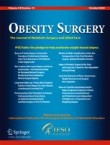
Abstract
Background
During the last decade, laparoscopic greater curvature plication (LGCP) has been used as a bariatric procedure for the treatment of obesity, regarded as less invasive and less expensive than other surgical bariatric procedures. We aimed to systematically review the literature and highlight recent clinical data regarding outcomes of LGCP in the treatment of obesity.
Methods
A comprehensive research of Pubmed database on LGCP was performed. The search was conducted on the first of May 2020 and was not limited to any date range. Outcomes of interest were surgical technique, postoperative complications, weight loss outcomes, comorbidities improvement or resolution, and revisional surgeries after technical failure or weight regain.
Results
Fifty-three articles were eligible for inclusion, with 3103 patients undergoing LGCP (mean age: 13.8–55 years). Mean preoperative body mass index (BMI) ranged from 31.2 to 47.8 kg/m2. Mean operative time ranged from 48 to 193 min. Length of hospital stay ranged from 0.75 to 7.2 days. Most studies provided postoperative follow-up up to 12 months. Mean percentage of excess weight loss (%EWL) ranged from 30.2 to 71.1% and 35 to 77.1% at 6 and 12 months post-LGCP, respectively. Only one study followed patients for more than 10 years and mean %EWL at 1, 5, and 10 years was 67%, 55%, and 42%, respectively.
Conclusion
LGCP seems to be an acceptable surgical procedure for the treatment of obesity, especially in centers having a low medical budget. However, most existing comparative studies report superiority of LSG regarding weight loss.




Δεν υπάρχουν σχόλια:
Δημοσίευση σχολίου